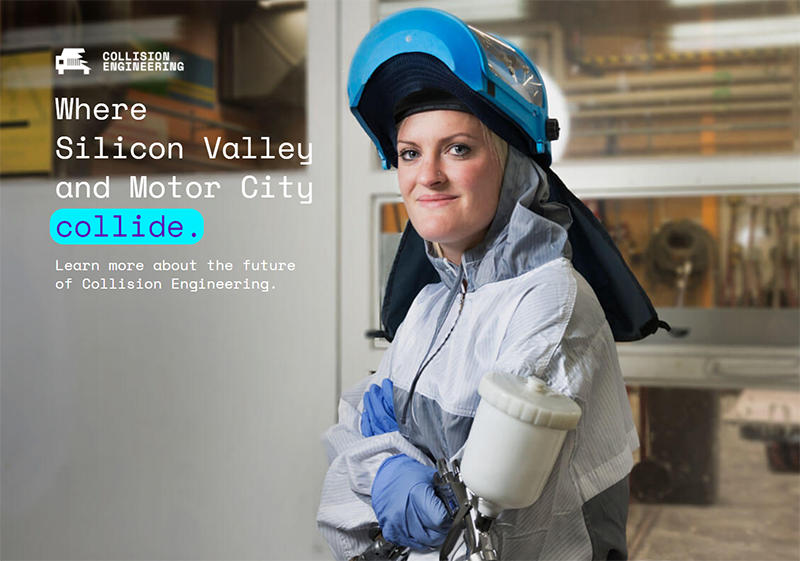Enterprise is supporting a new teaching model for the collision repair industry to enhance student proficiency and job placement According to the company, the term “technician” no longer encompasses all the experience and knowledge today’s collision repair technicians need to work on modern vehicles. Enter Collision Engineering.
The brainchild of John Helterbrand, national collision engineering program director at Ranken Technical College in St. Louis, Missouri, the two-year Collision Engineering pilot program kicked off in January and aims to better prepare and educate technicians for a career in collision repair.
More information about the Collision Engineering program is available online.
“This is education and the industry coming together to solve a problem. Neither entity can do it alone,” said Mary Mahoney, vice president, global replacement and leisure division with Enterprise Holdings, an initial program investor and partner.
After learning about Ranken’s established hybrid model for Collision Repair education, Mahoney encouraged colleagues in the industry to spend a day at the school learning more about the model. With support from Enterprise, Helterbrand and his team worked to create a business model for a new approach to collision repair technician training. It launched in January with four schools on board and an expanded roster of partners including GEICO, Progressive Insurance, American Family Insurance, I-CAR, Chief Automotive Technologies, the Society for Collision Repair Specialists, Ford, and Gerber, among others.
The program places students in the classroom for eight weeks, then rotates them into a collision shop for another eight weeks of hands-on training that helps them to learn and progress in a real-world environment. Using this schedule, students learn a different aspect of the four components of collision education — structural, non-structural, collision mechanical, and refinishing — each semester, moving from basic to advanced.
“This process allows us to improve the students’ experience as they enter the industry; it helps them to understand shop culture earlier and master skills learned in the classroom,” Helterbrand said. “We’ve found that students learn much better and faster when they learn in a variety of training environments and when they learn how to perform as part of a team. Collision engineering is the goal. Technicians of the future are engineers.”
To date, hundreds of shops have signed on to participate in the program. The program covers the cost of a providing a salary to students — to be used for tuition reimbursement — when they are in the shop setting.
“It is about changing perception and preparation and moving price off the table. We need to make sure all students have the opportunity to take advantage of this,” Mahoney with Enterprise said.
In addition to supporting ongoing improvements to student training and education, Enterprise is also a Platinum Sponsor for the Women’s Industry Network (WIN), which, too, has a vested interest in helping students and young technicians grow and thrive in the industry.
“Initiatives like this help support a critical component of WIN’s focus, which is our student segment. WIN is incredibly excited to see this program come to life and provide a refreshed perspective on the opportunities available in our industry!” said Jenny Anderson, WIN Chair.
Related Article:
